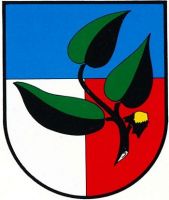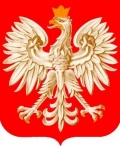Orzesze: Difference between revisions
Knorrepoes (talk | contribs) No edit summary |
Knorrepoes (talk | contribs) m (Text replacement - "''' :" to "''':") |
||
| (18 intermediate revisions by the same user not shown) | |||
| Line 1: | Line 1: | ||
{{ | {| class="wikitable" | ||
|- style="vertical-align:top;" | |||
|[[File:orzesze.jpg|center|350 px|alt=Coat of arms (crest) of {{PAGENAME}}]] | |||
| | |||
<center>''' {{uc:{{PAGENAME}}}} '''</center><br> | |||
'''Country''': Poland [[File:Poland.jpg|60 px|right]]<br><br><br><br> | |||
'''Province''': [[Śląsk]][[File:slask.jpg|60 px|right]]<br><br><br><br> | |||
'''County''': [[Mikołów (county)|Mikołów]][[File:Mikolow.dis.jpg|60 px|right]] | |||
{{#display_map:50.1430,18.7725|width=250|height=250|zoom=7}} | |||
|} | |||
{| class="wikitable" | |||
|+Official blazon | |||
|- | |||
|'''Polish''' | |||
| blazon wanted | |||
|- | |||
|'''English''' | |||
| blazon wanted | |||
|} | |||
===Origin/meaning=== | |||
The arms were officially adopted on January 24, 1992. | The arms were officially adopted on January 24, 1992. | ||
The arms show a golden hazelnut bush on a blue field. It consists of three thick branches symbolizing the three villages, forming today's town: Orzesze, Woszczyce and Gardawice and ten branches symbolizing the smaller villages and hamlets. | The arms show a golden hazelnut bush on a blue field. It consists of three thick branches symbolizing the three villages, forming today's town: Orzesze, Woszczyce and Gardawice and ten branches symbolizing the smaller villages and hamlets. I have no idea what the yellow spots signify (birds/bees ?). | ||
The first known arms dates from the first known 19th century seal and showed a woodcutter, standing in front of four deciduous trees, chopping one of them with an ax. This refers to the main occupation of the inhabitants, the manufacture of wood charcoal. | The first known arms dates from the first known 19th century seal and showed a woodcutter, standing in front of four deciduous trees, chopping one of them with an ax. This refers to the main occupation of the inhabitants, the manufacture of wood charcoal. | ||
In 1979 completely new arms were designed: a hazel branch on a tri-coloured shield. The colours referred to the colors of Silesia (blue) and Poland (white and red). The black and gold colurs of the branch referred to mining. The advantage of the coat of arms was simplicity | In 1979 completely new arms were designed: a hazel branch on a tri-coloured shield. The colours referred to the colors of Silesia (blue) and Poland (white and red). The black and gold colurs of the branch referred to mining. The advantage of the coat of arms was simplicity. The arms were abolished in 1991. | ||
===Image gallery=== | |||
<gallery widths=250px heights=200px perrow=0> | |||
File:orzesze1.jpg|alt=Arms (crest) of Orzesze|The arms from 1979-1991 | |||
</gallery> | |||
[[Civic Heraldry Literature - Poland|'''Literature''']]: Plewako and Wanag, 1994 | |||
{{pl}} | |||
{{media}} | {{media}} | ||
[[Category:Polish Municipalities O]] | [[Category:Polish Municipalities O]] | ||
Latest revision as of 09:15, 16 June 2024
|
Country: Poland Province: Śląsk County: Mikołów
|
| Polish | blazon wanted |
| English | blazon wanted |
Origin/meaning
The arms were officially adopted on January 24, 1992.
The arms show a golden hazelnut bush on a blue field. It consists of three thick branches symbolizing the three villages, forming today's town: Orzesze, Woszczyce and Gardawice and ten branches symbolizing the smaller villages and hamlets. I have no idea what the yellow spots signify (birds/bees ?).
The first known arms dates from the first known 19th century seal and showed a woodcutter, standing in front of four deciduous trees, chopping one of them with an ax. This refers to the main occupation of the inhabitants, the manufacture of wood charcoal.
In 1979 completely new arms were designed: a hazel branch on a tri-coloured shield. The colours referred to the colors of Silesia (blue) and Poland (white and red). The black and gold colurs of the branch referred to mining. The advantage of the coat of arms was simplicity. The arms were abolished in 1991.
Image gallery
Literature: Plewako and Wanag, 1994
Poland heraldry portal
This page is part of the Poland heraldry portal |
Heraldry of the World |
|
Civic heraldry:
|
Other heraldry: |
Contact and Support
Partners:
Your logo here ?
Contact us
© since 1995, Heraldry of the World, Ralf Hartemink 
Index of the site
















